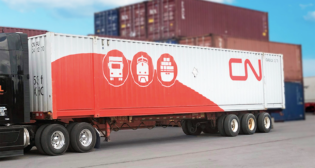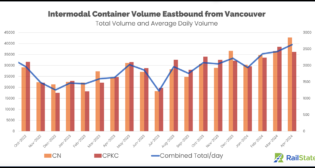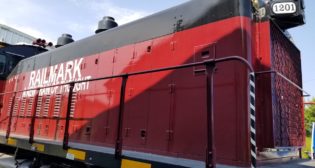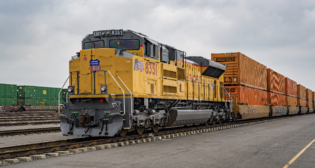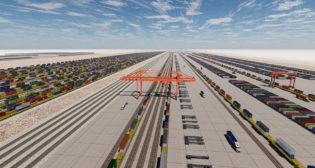
STB + FRA = The Odd Couple
Written by William C. Vantuono, Editor-in-Chief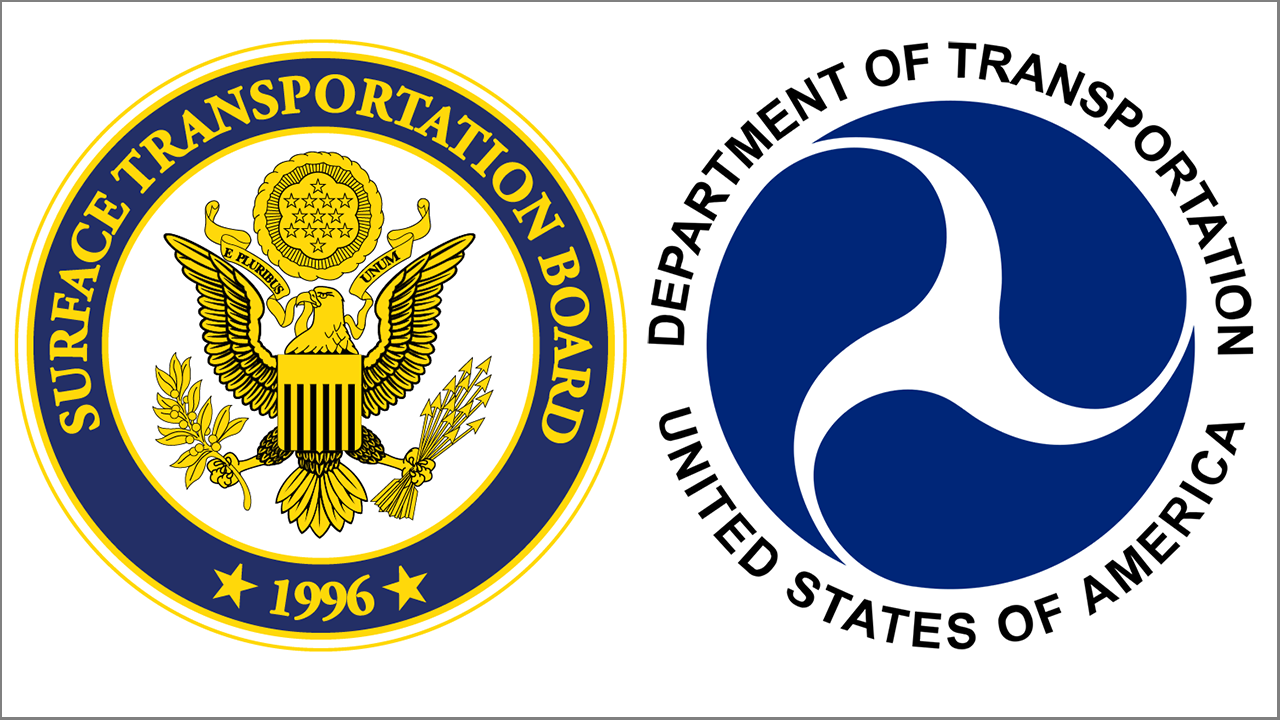
STB Chairman Marty Oberman and Federal Railroad Administrator Amit Bose are definitely sharing credits on Capitol Hill in an odd soap opera, the likes of which I’ve never seen in all my years covering this industry. It’s driving many to at least scratch their heads trying to figure out what’s going on. Joining lead players Oberman and Bose in this strange (or maybe not?) series of events is a supporting cast including Norfolk Southern, the activist-investor-led group attempting an NS takeover, and Union Pacific. The script (all of whose elements can be downloaded or linked to below) could be that of a soap opera. So concludes one of the most bizarre weeks in rail industry history:
Let’s start with Bose’s “making the obvious less obscure” letter to NS CEO Alan Shaw.
On Feb. 29, Oberman delivered an address at the Southeast Association of Rail Shippers 2024 Spring Meeting that amounted to an attack on activist investors and stressed that railroads “have benefited from massive governmental largess since their inception 200 years ago” STB issued a press release the same day:
The same day as Oberman’s SEARS speech, Bose sent a letter to UP CEO Jim Vena “regarding UP’s prioritization of cost-cutting above safety.” This, along with Bose’s letter to NS, was posted to the STB website as formal STB filings in Urgent Issues in Freight Rail Service—Railroad Reporting, Docket No. EP 770 (Sub-No. 1):
Also that same day, the FRA sent Railway Age its 175-page Fiscal Year 2023 Enforcement Report, which is chock full of “everything you always wanted to know about inspections, violations, fines, etc., but were afraid to ask.” It’s a public document, but to my knowledge this is the first time it has ever been sent to us. I don’t really know what I’m supposed to do with it, or what it’s supposed to represent, other than a collection of numbers, but here it is. Try not to doze off ………
The next day, Vena responded to Bose with a letter pointing to FRA’s “inaccurate correlation between natural workforce fluctuations and safety … [that] paints an incorrect and incomplete picture of the natural role workforce fluctuations play in operating a railroad year-round”:
A few weeks before Oberman gave his SEARS speech, Ancora sent him a letter stating, among other things, that the company is “the antithesis of a Wall Street firm” and wants Norfolk Southern “to become a safer railroad for all constituencies, including employees, customers and the communities the Company’s trains run through every day.“ Ancora said it is “available to speak about our engagement with Norfolk Southern.” I suppose Oberman doesn’t think Ancora is being sincere?
What’s really going on here? Consider this:
“As he goes out the door, Oberman is barking more loudly about competition, service quality and job preservation—three outcomes often in conflict with each other,” observes Railway Age Capitol Hill Contributing Editor Frank N. Wilner. ”Rather than a jumbled thought process, his words lately suggest a partisan approach on behalf of a President who is struggling to hold organized labor’s support ahead of November elections.
“Especially troubling is Oberman’s pouncing this week on non-railroad holding company Ancora in the midst of a proxy fight that is the exclusive business of Norfolk Southern stockholders and in which the STB has no statutory authority. Interference in free markets by choosing winners and losers is not the role of government agencies. Whatever Oberman’s fanciful concerns as to the future may be, should a changeout of the NS board actually occur, they are properly handled when evidenced—and for that the STB has an effective toolbox.
“As for Precision Scheduled Railroading, Oberman broadly attacks a work-in-progress being tweaked individually by railroads and with differing results—a fact already recognized by an Oberman agreed-to selective reporting requirement exempting two railroads.
“As for the FRA, evidence mounts that regulatory decisions are at variance with the agency’s safety mission, driven here also by fear of headcount reductions. FRA Administrator Amit Bose’s rejection of benefit/cost analysis smacks disturbingly of a luddite approach to technological advancements.
“Examples are FRA’s promised final rule mandating an inflexible two-person crew requirement; declining to adopt—in place of a 50-year-old labor-intensive rule—a track safety inspection program utilizing modern technology; and refusing final action on a rule allowing modern electronic brake inspection that would materially reduce costs while simultaneously reducing headcount.
“Ideological preferences have no place in regulatory agencies or among the Senate-confirmed voting members. Congress, through statute, has delegated specified tasks to these agencies, but certainly not that they be engine rooms for partisan outcomes.”
(Editor’s note: In his new book, “Railroads & Economic Regulation,” Wilner explains how government micro-managing of railroads between 1920 and 1980 caused the industry to fail each of its depending constituencies—investors, shippers and employees.)
Rail Safety Number-Crunchers Take Note
Returning to the safety topic: Statistics don’t lie, but those who like to play magic tricks with numbers often twist statistics to suit their own agendas. “There are three kinds of lies: lies, damned lies and statistics” is a well-known saying attributed to Mark Twain. He was actually quoting British Prime Minister Benjamin Disraeli (1874-1880)—who might have never said it in the first place.
Who knows? Maybe Leonardo Da Vinci said it first. “Esistono tre tipi di bugie: bugie, maledette bugie e statistiche.”
So much for free Collins Dictionary online English-to-Italian translations.
On Feb. 27, the Association of American Railroads issued its Preview Guide to 2023 FRA Rail Safety Data, whose intent is to help those who “analyze and contextualize” the information, “which can be difficult to interpret.” That’s a polite way of way of saying, “These statistics are user-friendly to anyone who wants to paint a frightening picture of the railroad industry.”

Imagine Edvard Munch’s 1893 The Scream set on railroad tracks.
“Even the most well-intentioned attempts to accurately interpret and share this data can contain serious flaws, because the data itself is complicated,” AAR noted. “And in many instances, context—including changes in reporting thresholds, operating procedures and definitions of key terms—is critical to accurately portray the current state of freight rail safety.”
So, even if the well-intentioned can scramble the facts, imagine what the ill-intentioned can do (and they’ve been doing it, over and over).
“Troublingly, the FRA has failed its communications mission in not making clear that the majority of mandatorily reportable rail accidents are the equivalent of fender benders, and that the majority of mandatorily reportable derailments are minor incidents occurring in rail classification yards,” comments Frank Wilner. “Unlike the independent NTSB and STB, which are meticulous in attention to facts and detail, Executive Branch agencies such as the FRA too often succumb to a political agenda in their presentation of data.”
“Year-over-year measures inform how rail carriers can focus their efforts to continuously improve rail safety across their networks, and it provides realistic enchmarks for future progress,” AAR accurately points out. “However, the better measure of overall rail safety is reflected in the historical trendline.”
How many well-intentioned people will cite a trendline? Very few. How many ill-intentioned? Zero.
